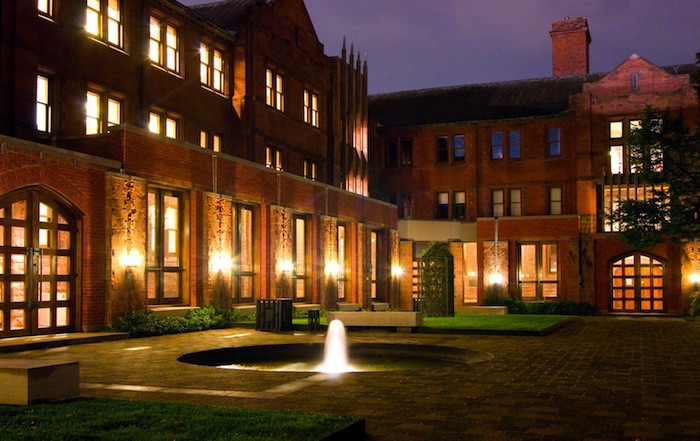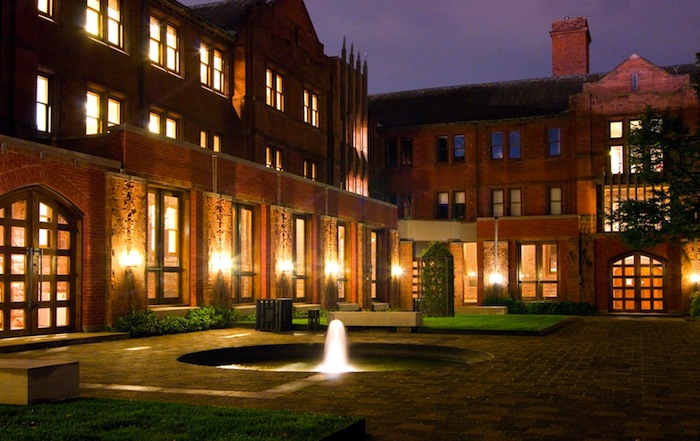

Editor’s Note: Students are back at journalism programs around the country. As the media industry continues to evolve, how well is new talent being trained, and how well are schools preparing them for the real world? We asked an array of people — hiring editors, recent graduates, professors, technologists, deans — to evaluate the job j-schools are doing and to offer ideas for how they might improve. Here Robert Steiner, director of the Fellowships in Global Journalism at the University of Toronto’s Munk School of Global Affairs, talks about the different model that he’s trying — turning experts into journalists rather than journalists into experts.
In its series of pieces on journalism education, the Nieman Journalism Lab raised two of three ideas that could really change the field. The first, from Len Downie: Journalism schools should work more like teaching hospitals. The second, from CNN Digital’s Meredith Artley, is that specialists in certain beats are getting hard to find.
But the breakthrough comes in melding those two ideas to a third: The world now belongs to freelancers.
With that, you have a new kind of journalism education now in its first month at the University of Toronto.
Our Fellowship in Global Journalism deliberately recruits subject-matter experts — academics and professionals — and teaches them to break news in their own disciplines for media around the world. Like medical students, our Fellows spend only a couple of hours a day in class. They spend most of their time working their own beats as stringers for major media; those are our so-called teaching hospitals.
Our fellows don’t get homework; they pitch, report and file to newspapers like The Globe and Mail, The Toronto Star, The Dallas Morning News, and The National Post; to broadcasters like CBC News and to specialty news agencies like the Thomson Reuters Foundation’s Trust.org.
They don’t have professors; they have journalism coaches in the University and editors on the desk.
They don’t get marks; their stories either run, or get spiked.
They don’t get a degree; they don’t need another degree.
This year’s fellows include two young professors, three PhDs, a lawyer, a former advertising executive, a former development aid professional, an architectural designer, and a Middle East specialist. Instead of producing a degree, the eight-month program helps them generate reporting networks, clips, sources and a running start to a freelance career for media around the world.
Most importantly, this doesn’t happen at a j-school. The University of Toronto ranks high among the world’s research universities but we have no traditional journalism school to reform. The fellows in Global Journalism sit in the Munk School of Global Affairs, just down the hall from other students preparing for international careers in public service, development, law, science, and business.
Like so much else in journalism now, this is an experiment. So far, it’s working.
Big papers and broadcasters jumped on board to help us get it off the ground. After two weeks of boot camp, our Fellows are beginning to think like journalists. Their story ideas make me sit up, and they have an early flair for interviewing. They’re also feeling all the anxieties about accuracy and deadlines that plague the rest of us.
The idea began three years ago, when some colleagues asked me about the future of journalism education. I was assistant vice president of the university at the time, but had spent my early career as a foreign correspondent for The Wall Street Journal. I’d never gone to j-school, and was so removed from the discussions about reform that I had no idea the Carnegie Corporation of New York and the John S. and James L. Knight Foundation were on their way to investing almost $20 million in the same question at that very moment.
For a month, I scanned the curricula of major j-schools around the world and compared them to changes in the way reporters worked since I’d left the Journal for business school at Wharton in 1997. The gaps between curriculum and practice floored me. J-schools were teaching generalists, but the healthiest media companies were going after niche audiences. (And a one-term j-school course in, say, “science for journalists” was not enough to turn produce a knowledgeable specialist.)
J-schools were preparing students to work in newsrooms, but newsrooms were shedding reporters and hiring freelancers. Freelancers, in turn, were saturating their local markets; but one specialized freelancer could become a go-to stringer for media in a dozen markets around the world.
Students in traditional j-schools still expected to “learn by doing” journalism in their summer internships, the way I had as a political science student in the 1980s and 1990s. But few editors have time to teach interns anymore.
So we set out to create something completely different.
We’d recruit real specialists, instead of trying to teach a specialty to generalists. After one month of boot camp, we’d put them right into real media, rather than lock them in class for eight months before an internship. We’d coach them while they worked, rather than dump the teaching job on busy editors. And we wouldn’t prep them for staff jobs. We’d teach them to juggle one lead string with six or seven secondary strings in other markets around the world.
Those differences forced us away from the old path in other ways. Newspapers, broadcasters and web services are our teaching partners — they help us design and even deliver a curriculum that supports their journalism. We teach core writing, broadcast, web and mobile journalism skills. But our curriculum emphasizes global news judgment. Traditional journalism students get assignments; ours must hunt for stories that will play well in markets around the world, defend them to me and another former foreign correspondent at a weekly story meeting, and then pitch them to their lead string.
To help our fellows stay on top of their beats, we’ve embedded them in the broader university. We’ve introduced each student to a dozen top researchers in their own field elsewhere on campus. Political scientists at the Munk School, including Michael Ignatieff, deliver a seminar series on current developments in global affairs. And a clinician in our faculty of social work will teach the lost art of deep interviewing; the way she teaches therapists to spend an hour probing complex issues with patients. At some point along the way, I realized we were bridging the values of a Wall Street Journal bureau, circa 1997, to the working world of 2012.
Boot camp ended on September 28.
By October 6, two of our Fellows had already been published in major media. Santiago Ortega wrote about the U.S. presidential candidates’ positions on climate change for Alertnet.org (a site of the Thomson Reuters Foundation), and Stephen Starr wrote about the Syrian National Council for Canada’s National Post (paywall protected; here’s a more recent piece).
Others are now digging out unreported news on major changes in urban development, police oversight, and environmental regulations, among other topics. They’re nervous. Restless. Pumped when a pitch goes great. Anxious when the next one doesn’t. “Riding a roller coaster,” as one Fellow told me recently.
So far, so good.
Munk School photo courtesy the University of Toronto.